Improving allogeneic hematopoietic stem cell transplantations and cellular immunotherapies
The lab of Claudia Lengerke is employing genetic engineering to improve allogeneic hematopoietic stem cell transplantation (alloHSCT) outcomes and cellular immunotherapies
- A major cause of death in acute myeloid leukemia (AML) is progression and relapse emerging from persistent therapy-resistant leukemic cells with stem cell characteristics. These so-called leukemic stem cells (LSC) presumably compete with healthy hematopoietic stem cells (HSCs) for the occupancy of protective bone marrow niches. Wnt signaling is critical during HSC development (Lengerke et al., Cell Stem Cell 2008) and a dominant factor governing stem cell self-renewal and the maintenance of adult HSCs (Luis et al., Cell Stem Cell 2011). Interestingly, dose dependent effects have been shown for canonical Wnt signaling in HSCs, with only mildly increased Wnt signaling levels (2-fold) mediating increased fitness (Luis et al., Cell Stem Cell 2011).
Funded by an ERC Consolidator Grant to Claudia Lengerke, we seek to explore whether improving healthy HSC fitness and niche affinity can prevent LSCs from occupying niche space and thereby impact their ability to resist therapies and induce relapse. We propose to engineer healthy human HSCs with 2-fold canonical WNT induction by introducing a heterozygous APC knockout using CRISPR/Cas9 technology. We hypothesize that (1) these enhanced WNT levels will improve HSC fitness and transplantation results and that (2) such HSCs can better resist the expansion of AML cells in bone marrow niches, and that thereby their use for transplant therapies will improve therapy responses and outcome in patients with AML. This hypothesis is supported by preliminary data of our group showing that in vivo stimulation of canonical Wnt signaling with LiCl treatment impairs leukemogenesis.
Major contact persons: Dr. Saskia Rudat - Previous data of our group shows that poly-ADP-ribose polymerase 1 (PARP1) represses the expression of NKG2D-ligands (NKG2DL) on the surface of LSCs (Paczulla et al., Nature 2019). Genetic or pharmacologic inhibition of PARP1 induces NKG2DLs specifically on LSCs but not on healthy or pre-leukemic cells. Due to the re-expression of NKG2DL on their surface, LSCs become targetable by the immune system.
We plan to generate tailored chimeric antigen receptor (CAR) NK cells with an NKG2D-CAR at their surface. The administration of NKG2D-CAR-NK cells, as cellular therapy, combined with the PARP1-inhibition is expected to further enhance the clearance of LSCs.
Major contact persons: Dr. Saskia Rudat, Dr. Luca Hensen - After their infusion, we will follow engineered cells in patients to explore their clonal and phenotypic architecture over time, and to investigate their influence on the cytokine milieu, niches, tumor cell persistence and the endogenous non-transplanted immune system.
Major contact persons: Dr. Anna Stanger, Dr. Luca Hensen



